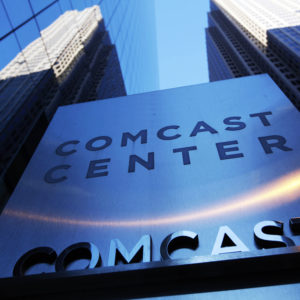The Federal Communications Commission hit Comcast with the largest fine in cable history Tuesday for fraudulent billing practices, including charges for services and equipment customers never requested and failing to resolve disputes effectively.
Comcast will pay a record $2.3 million fine issued by the FCC’s Enforcement Bureau for a practice known as “negative option billing” — when providers charge consumers for options they did not affirmatively request, and according to the investigation, often times they specifically declined.
“In some complaints, subscribers claimed that they were billed despite specifically declining service or equipment upgrades offered by Comcast,” the FCC said in a statement Tuesday. Those services and equipment included premium channels, set-top boxes and digital video recorders (DVRs).
“It is basic that a cable bill should include charges only for services and equipment ordered by the customer — nothing more and nothing less,” chief of the FCC’s Enforcement Bureau Travis LeBlanc said. “We expect all cable and phone companies to take responsibility for the accuracy of their bills and to ensure their customers have authorized any charges.”
Some customer complaints alleged they had no knowledge of the charges until equipment or notice of unrequested account changes arrived in the mail or email. Others said they didn’t discover the changes until reviewing their monthly bills.
“Consumers described expending significant time and energy to attempt to remove the unauthorized charges from their bills and obtain refunds,” the FCC said.
Under the terms of the FCC’s enforcement action, Comcast will implement a five-year compliance plan that includes getting affirmative, informed consent before adding services, sending separate documentation describing any and all changes, offering customers a no-cost option to block any changes, implementing a new system for solving disputed charges and blocking those charges from going into collections or resulting in suspended service until disputes are resolved.
According to Sena Fitzmaurice, Comcast’s vice president of government communications, the cable provider already began implementing several of those changes before the FCC launched its investigation almost two years ago.
“We have been working very hard on improving the experience of our customers in all respects and are laser-focused on this. We acknowledge that, in the past, our customer service should have been better and our bills clearer, and that customers have at times been unnecessarily frustrated or confused,” Fitzmaurice told InsideSources Tuesday.
Poor customer service stories at Comcast became such an increasingly frequent media story into the middle of 2015, the company announced a plan last May to overhaul its customer service arm by hiring more than 5,000 people along with adding new equipment and procedures.
“We do not agree with the bureau’s legal theory here, and in our view, after two years, it is telling that it found no problematic policy or intentional wrongdoing, but just isolated errors or customer confusion,” she added. “We agree those issues should be fixed and are pleased to put this behind us and proceed with these customer service-enhancing changes.”
The findings of the investigation follow a congressional report released earlier this year that found 40 percent of a sample of customers who called Comcast in December of 2015 were unable to have their problem resolved during a single phone call. The report cited training documents showing companies specifically instruct employees to block customers from canceling services.
Lawmakers on the Senate Homeland Security and Governmental Affairs Permanent Subcommittee on Investigations cited a recent American Customer Satisfaction Index survey that found pay-TV providers including Comcast and Time Warner Cable ranked near the bottom of 43 other industries, and were tied for last the year before.
Comcast, the nation’s largest cable and internet service provider, led the pack last year in customer service complaints with 11,812 complaints between January and November — more than AT&T, Verizon and Time Warner Cable combined, despite having 15 million fewer subscribers.
Ohio Republican Sen. Rob Portman, chairman of the committee, and ranking Democrat Sen. Clair McCaskill of Missouri released two reports earlier this summer and have subpoenaed documents from Comcast and other cable providers. They held a hearing in June where Comcast CEO Brian Roberts and other top execs declined to show up, sending subordinates instead to receive a grilling from senators.
“Nobody knows how to get the best price from you,” McCaskill told executives. “That is the kind of stuff that is driving people through the wall.”
At the time senators said they expected to wrap up their investigation by autumn.
Though the FCC cited complaints it received as the basis for the investigation, it isn’t the first time the regulator has followed the Senate’s lead on changes to the cable industry in recent history.
FCC Chairman Tom Wheeler cited a survey by Sens. Ed Markey of Massachusetts and Richard Blumenthal of Connecticut that claims the average U.S. household spends $231 annually in set-top box rental fees (pulling in almost $20 billion every year for providers) as his sole justification for a plan to make cable providers switch to apps instead of necessitating set-top boxes.
Minutes before the agency’s last open meeting, Wheeler indefinitely delayed a vote on the plan, presumably until he can drum up enough support from the two other Democrats on the five-member commission for passage.

